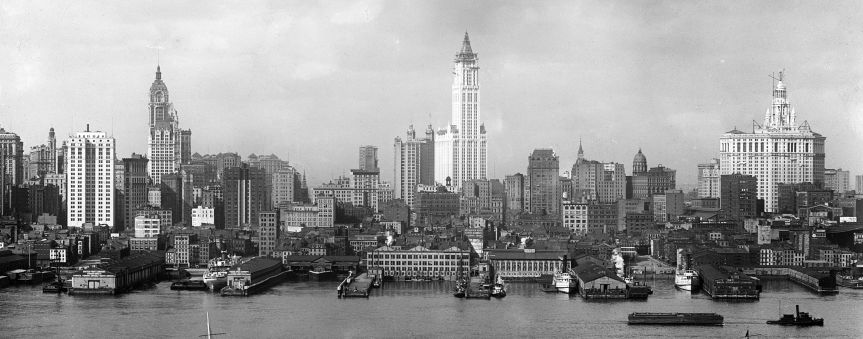
THERE IS SOMETHING ABOUT NEW YORK, as they say, but I am not sure what that something is. On this day, the tip of lower Manhattan that protrudes into the Atlantic is blanketed by gray clouds. The wind comes in off the water and finds its way between the buildings. These unnatural barriers that rise into the sky only embolden the wind. It ruffles your hair and clothes.
The colors of Manhattan are muted. The people dress in black and gray, with the occasional festive hat or scarf. Even the most colorful scarf though loses its vibrancy in the city’s shadows. This is among the most diverse corners of the world, so they say, and there are many tones of skin and angles of faces, African, indigenous, European, Asian. Rather than being some carnival of humanity, these too are rendered in shades of gray.
On a spring day, nearly 400 years ago, a Dutch vessel anchored in these waters, and a man named Peter Minuit, who wore the dashing attire of the Dutch Republic, acquired this sliver of an island for trinkets valued at around a thousand euros. Minuit bought it from a group of Indians he met who resided in what is now called Brooklyn. The island of Manhattan was actually controlled by a different group of Indians. As such, these Indians sold something they didn’t own and enriched themselves in the process.
It was Manhattan’s first business deal.
Ever since then, all threads of the world have passed through the eye of Manhattan’s needle. New York remains the obelisk around which my own life has turned. As far as I have retreated from its allure, to the fringes of Europe, I will never be released from its magnetic tug. I work for New York, I set my clock to New York. When it’s afternoon in Estonia, it’s morning in New York. The story of my family goes through New York. On Saint Mark’s Place in the East Village there is an old house covered in ivy where my great grandmother was born to an Irish family. This same old woman whom I knew as a child. Her name was Genevieve Carroll. It was for her that I received my middle name. Even today on Estonian documents, I sign my full name.
To get into the office where I will work today, I have to show my Estonian identity card, the one with the terrible photo that was taken in a booth in Tartu. It somehow passes the scrutiny of the gray man at the desk, who calls up to the office to check whether or not I am a welcome visitor.
Then I am shown through a security gate to the elevators by another colorless face. You must push your destination floor, and then you are prompted to enter a certain elevator. If you get in the wrong elevator, you will be sent to the wrong floor. To get into the office, you need a code. When I go to use the restroom, I see a shadow on the floor, the shadow of another man. Instinctively, I quicken my pace to get away. In such an environment, everyone is suspect.
This is the era of security, the era of bombings, shootings, political dysfunction. The people work on, the markets of Manhattan rattle on, but something has been lost. The color has turned to gray.
It wasn’t always this way. During the roar of the Nineties, Manhattan was the kaleidoscopic center of frivolity and good will. Famous people who were famous for being famous roller-bladed through the park holding hands. Even a decade ago, before the economic crash, one would only need to pause by the side of the road to hear good hip hop blaring out of a passing radio, or see a smiling girl skateboarding down the street. There was a feeling of camaraderie, of unlimited possibility. Manhattan still felt young then. Now it has turned into my great grandmother, an old gray lady.
Yet there is still hope in old age, I think. The hope of being reborn. The hope of reincarnation.
